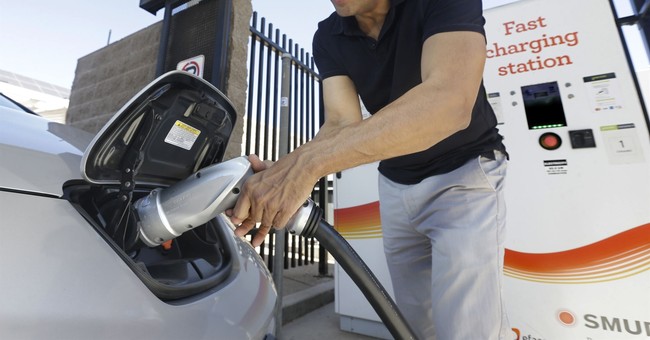
Throughout the 2020 presidential campaign season, then-candidate Biden continually promised that he would not raise taxes on households making less than $400,000 per year. It was a promise echoed again by the White House just over a month ago, but the so-called American Jobs infrastructure plan rolled out by the administration pulls a bait-and-switch on the American people, particularly the working poor and ethnically diverse communities.
A key component of the Biden plan is the push for a nationwide transition to electric vehicles, which takes up some $174 billion in subsidies from the package, but one of the largest problems with the proposal is its disregard for the negative downwind effects it would have on those at the lower rungs of the economic ladder. As of 2019, the average cost of an electric vehicle was $55,600, far greater than the cost of other vehicles more affordable for lower income families. In fact, another recent study showed that the average income of electric car owners is at least $100,000 per year, well over even the middle-income line. While the Biden plan throws truckloads of money at other angles of the electric vehicle issue, it does nothing to address the fact that lower income households simply cannot afford electric vehicles. To make matters worse, electric vehicles only account for 2 percent of vehicle sales in the U.S., even though they have been an option for vehicle purchasers for a significant period of time. The Biden plan is catering to a niche segment of an industry, in a show of political nepotism for a pet campaign promise while slapping the American worker in the face in the process.
An aggressive plan like Biden’s calls for significant bumps in energy and electric grids. Even currently, with a transportation budget of $1.5 billion, electric companies have almost $1 billion more in requests for expansion, and this is the case notwithstanding the drastic increase in energy grids that the Biden plan would implement. More electric grids cost the utilities more to operate, meaning large spikes in utility costs.
California provides an example of this type of policy gone wrong, as it invests the most of any state into electric vehicle infrastructure yet has increasing issues with blackouts, high utility costs, and general cost-of-living increases. For instance, as of 2010, SDG&E, the major energy provider in the San Diego and southern California region, has seen consistent rate increases. Conversely, utility disconnections due to overdue bills and payments has also steadily climbed within this time period, suggesting that ratepayers are finding it more difficult to keep up with rising costs. Even more specifically, those burdened with these rate hikes are disproportionately minority groups in disadvantaged communities, who shoulder these costs for the benefit of disproportionately affluent areas that can afford EV’s.
Additionally, American seniors are keenly affected by these rate hikes. Per an AARP testimony in 2019 in Arizona, “twenty percent of Arizonans 65 and older rely on Social Security as their sole income source. Fifty percent get a substantial portion of their income from Social Security…[which] is about $17,500/year…Older Arizonans have much higher medical costs so many already [are forced] to choose today between, food, rent, medical care and very limited transportation…they cannot afford higher electric utility rates much less for electric vehicles.” Yet again, ratepayers are being conscripted to subsidize a service that they do not use, at the cost of their own well-being.
These specific examples are simply the tip of the iceberg. If the Biden E.V. plan is implemented, the consequences would be far more drastic than even the current rate hikes. If less fortunate groups are not benefiting from electric vehicles, why should they be forced to pay for them? Spiked electric utilities affect the poor and vulnerable more negatively than any other economic demographic. Utilities are a difficult commodity to live without, particularly within a family, and they should not be burdened with rate hikes for services they do not use. Simply put, lower income households are not driving electric vehicles, and the Biden plan not only gives them no incentive or ability to do so but punishes them for costs incurred by wealthier households, all while claiming victory because rate hikes caused by government action aren’t technically a tax. Tax or not, the cost to the American people is the same. The ploy is a cruel bait-and-switch tactic that misleads the American people and should raise red flags about the Biden administration’s friendliness to the American worker.